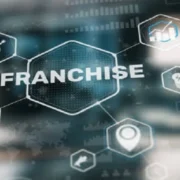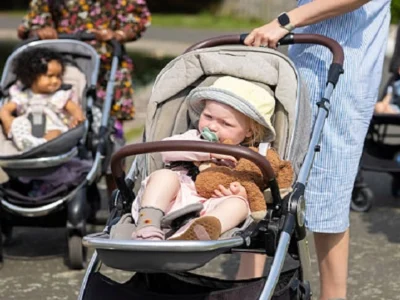Introduction
Event programs are more than just informational brochures; they serve as a roadmap to the event proceedings and play a crucial role in influencing the attendee experience. Whether you’re orchestrating a corporate conference, a grand wedding, or a vibrant community festival, a meticulously designed program sets the stage and offers invaluable insights. But how do you craft a program that truly stands out? This guide will systematically lead you through the essential steps to produce an exceptional event program from inception to completion. From selecting the right theme to printing programs for events, each aspect is critical in achieving a successful and memorable event.
Utilizing professional services ensures that each detail presents a polished appearance, from the initial design to the final print. This level of attention to quality enhances the attendee experience and elevates your event’s overall perception and branding.
Understanding the Purpose of Your Event Program
Before diving into the design process, clearly defining your event program’s primary objectives is crucial. Is the program intended to inform guests, honor sponsors, or serve as a memorable keepsake? Properly understanding its purpose will guide both the content creation and design strategy. A study by Event Marketer highlights that programs with well-defined objectives engage audiences more effectively, ensuring that the materials resonate and deliver the intended message seamlessly.
Balancing Design and Content
An effective event program expertly balances compelling design with enriching content. Captivating designs capture attention, but the content sustains interest and engages attendees. Consider incorporating visually striking elements such as high-resolution images, bold headings, and creative typography. However, these elements should be harmonious with the informational content they support, enhancing rather than overwhelming the message. Design tools like Canva offer user-friendly interfaces that facilitate the creation of professional-quality layouts, even for those without advanced design skills, empowering you to achieve a cohesive presentation.
Choosing the Right Design
The design of your event program should naturally reflect the event’s theme or the overarching brand identity. Attention to detail in choosing colors, fonts, and layouts ensures consistency and coherence throughout the program. For corporate gatherings, a sleek and modern aesthetic can convey professionalism and innovation, while a wedding may benefit from including elegant, romantic details to emphasize sentimentality and celebration. Additionally, ensuring the design is intuitive and user-friendly allows attendees to easily navigate the program, accessing the information they need with minimal effort.
Essential Elements to Include
To ensure your event program is both informative and useful, incorporate these essential components:
- Event Schedule: Provide a comprehensive outline of the event’s timeline detailing key sessions, breaks, and networking opportunities. This schedule is vital for attendees, enabling them to navigate their day effectively and anticipate important activities.
- Speaker Bios: Present brief biographies and photos of the event’s speakers. Introducing the presenters enhances credibility and allows attendees to appreciate the depth of expertise and background each speaker brings to the session.
- Venue Information: Supply a map and essential details about the location, such as parking instructions, accessibility options, and nearby amenities. This information facilitates seamless navigation and enriches the attendee’s overall experience.
- Sponsor Acknowledgements: Highlight and express gratitude to the sponsors and partners whose support made the event possible. Acknowledging sponsors not only demonstrates appreciation but also fortifies professional relationships, paving the way for future collaborations.
- Contact Information: Provide contact details of event organizers or support staff. This information ensures attendees can effortlessly reach out for more guidance or assistance during the event, fostering open communication and attendee satisfaction.
Best Practices for High-Quality Printing
When the time comes to print your event programs, prioritizing quality is essential. Choosing professional printing services that offer a range of finishes and paper options can significantly enhance the program’s aesthetic appeal. High-quality printing is not just about visual richness; it contributes to the tangible experience of holding the program, leaving a long-lasting positive impression on guests.
Choosing the Right Materials
The materials used in your event program can dramatically influence its impact. Glossy paper offers a sophisticated, professional look, ideal for corporate settings, while matte finishes provide a timeless, understated sophistication. Consider the density and texture of the paper, as a heavier stock exudes luxury and durability, offering a tactile experience that communicates the high caliber of your event.
Effective Distribution Strategies
Getting your event programs into attendees’ hands effectively is as crucial as the design and content. Distribution strategies can include handing them out at registration desks, placing them on seats, or making them available in common areas within the venue. For virtual events, offering digital versions ensures accessibility and caters to environmentally conscious participants. Ensuring easy access to programs bolsters the event’s success by providing attendees with all the information they need at their fingertips.
Digital Distribution
With the rise of virtual and hybrid events, digital distribution is pivotal in outreach. Digital alternatives, such as downloadable PDFs or interactive app-based programs, save on printing costs and minimize the environmental footprint. They also provide the flexibility to update or correct information swiftly, ensuring attendees receive the most accurate event details.
Gathering Feedback and Continuous Improvement
After the event concludes, it is crucial to gather feedback on the program from attendees. Consider soliciting feedback on informativeness, design appeal, and ease of navigation. This information is invaluable for identifying improvements and ensuring future programs are even more effective and engaging.
Methods to Collect Feedback
Employing various feedback collection methods enhances the quality and quantity of responses. Surveys, brief onsite interviews, and post-event electronic feedback forms can all provide nuanced insights into what attendees value and where enhancements might be needed. Careful analysis of this feedback allows for targeted improvements, ensuring that each subsequent program is aligned closely with audience expectations and needs.
Conclusion
Designing a stellar event program is a multifaceted task requiring dedication and an eye for detail. Yet, the effort is undoubtedly rewarding. By understanding the audience, harmonizing design and content, and emphasizing quality in production, you can craft programs that enrich the event experience and make a lasting impression on attendees. Gathering and responding to feedback ensures that your event programs will meet and exceed expectations, resonating positively with your audience and setting the stage for future successes.
Pedrovazpaulo Coaching: Mastering the Art of Leadership









Comments